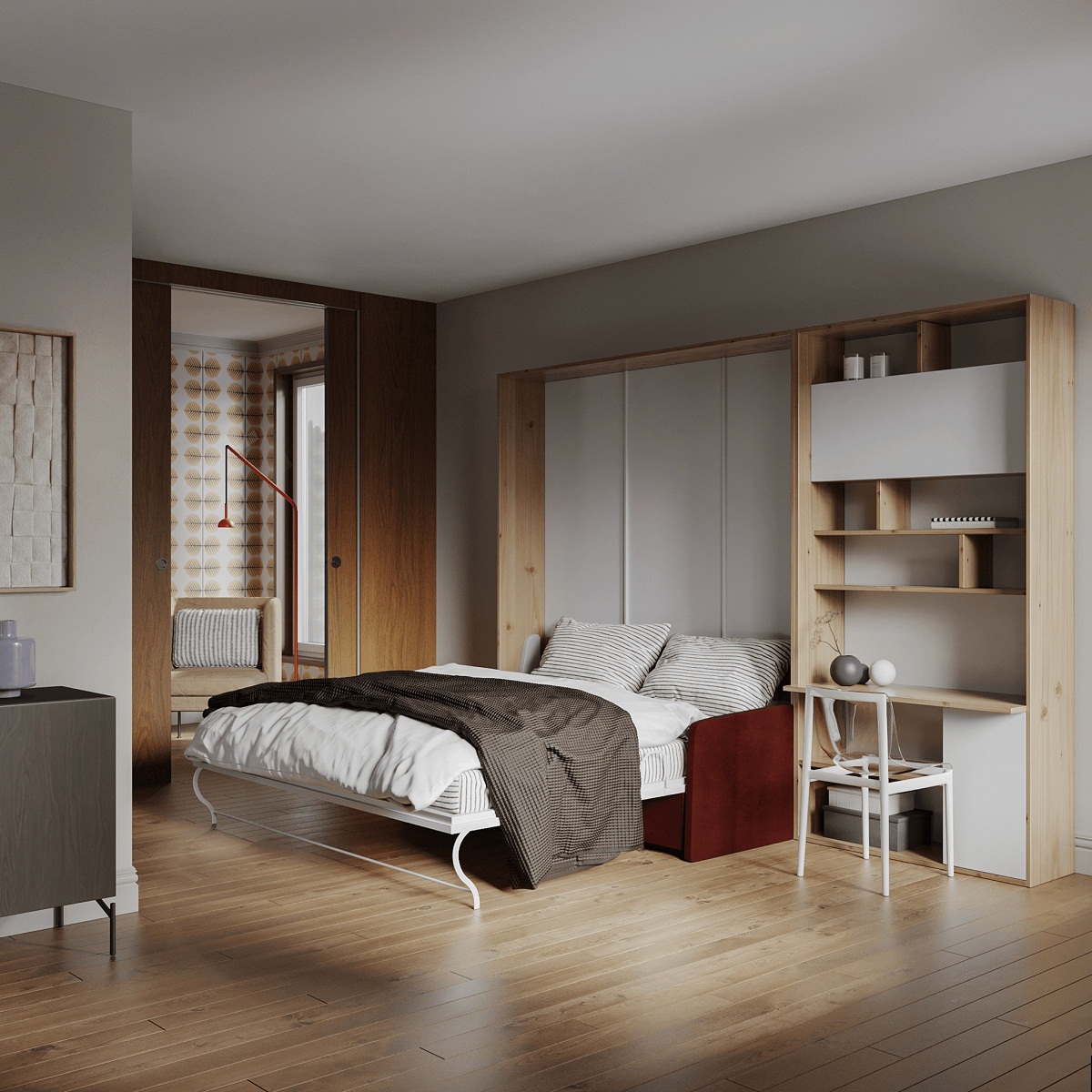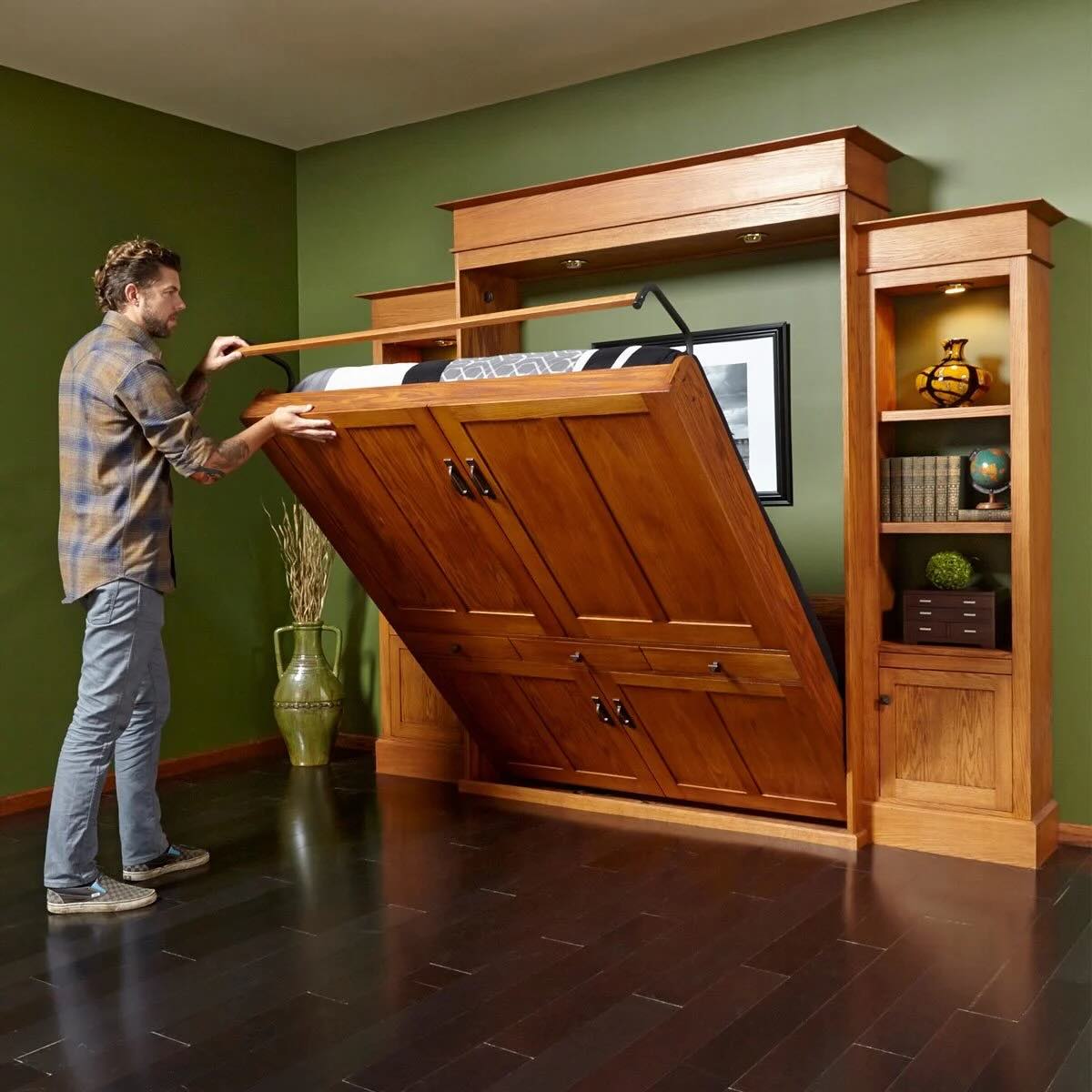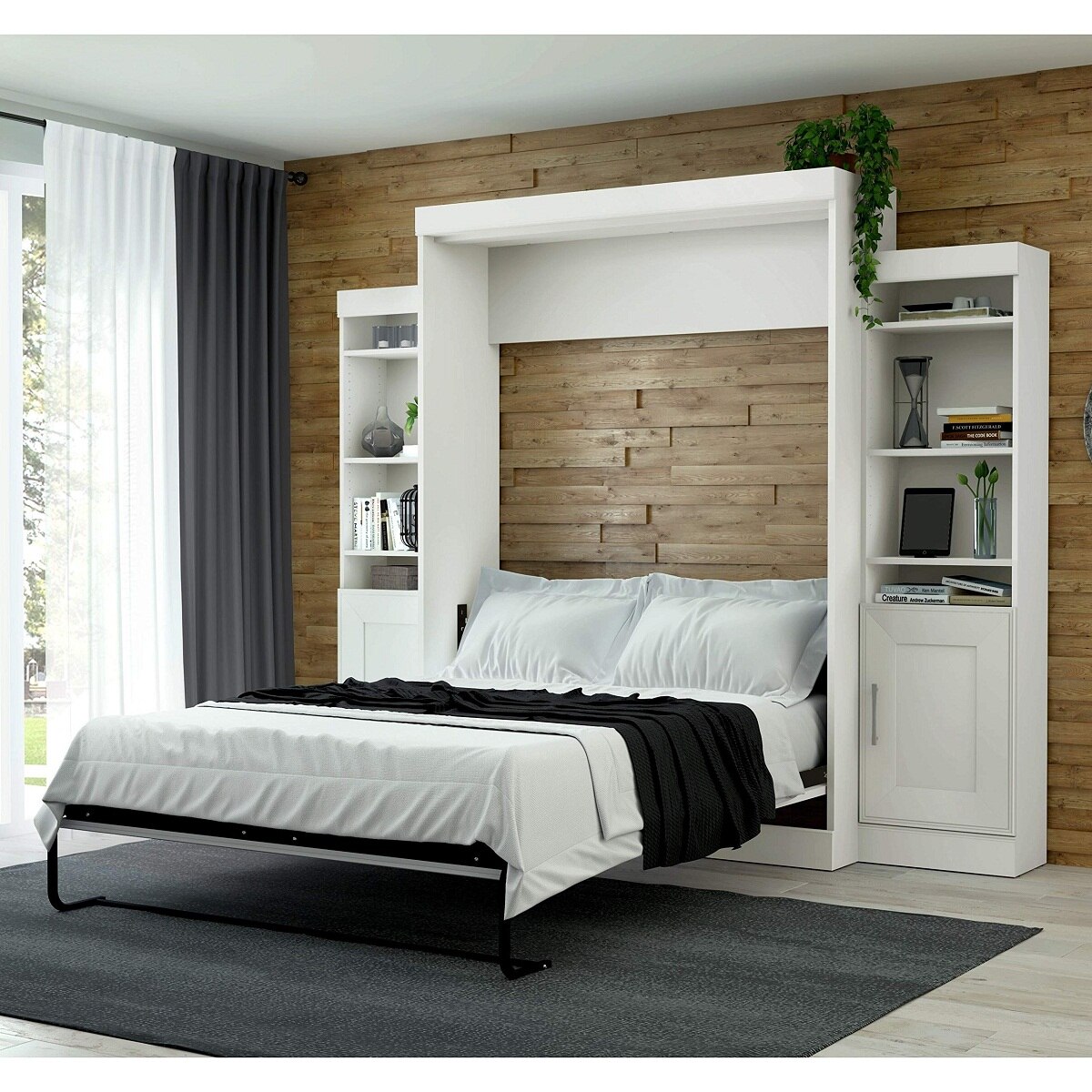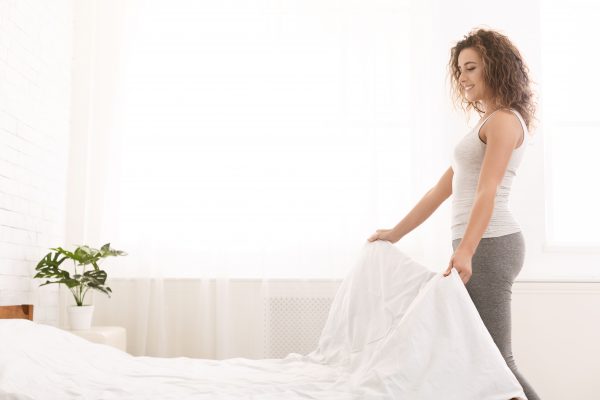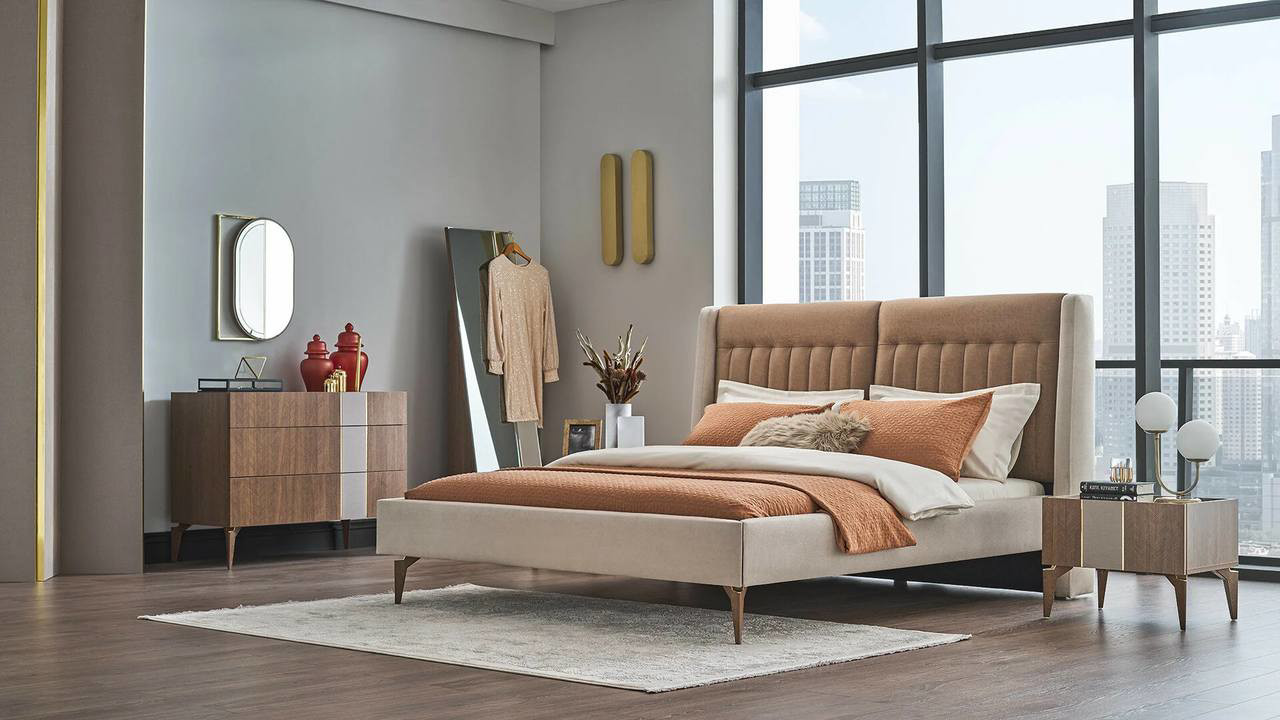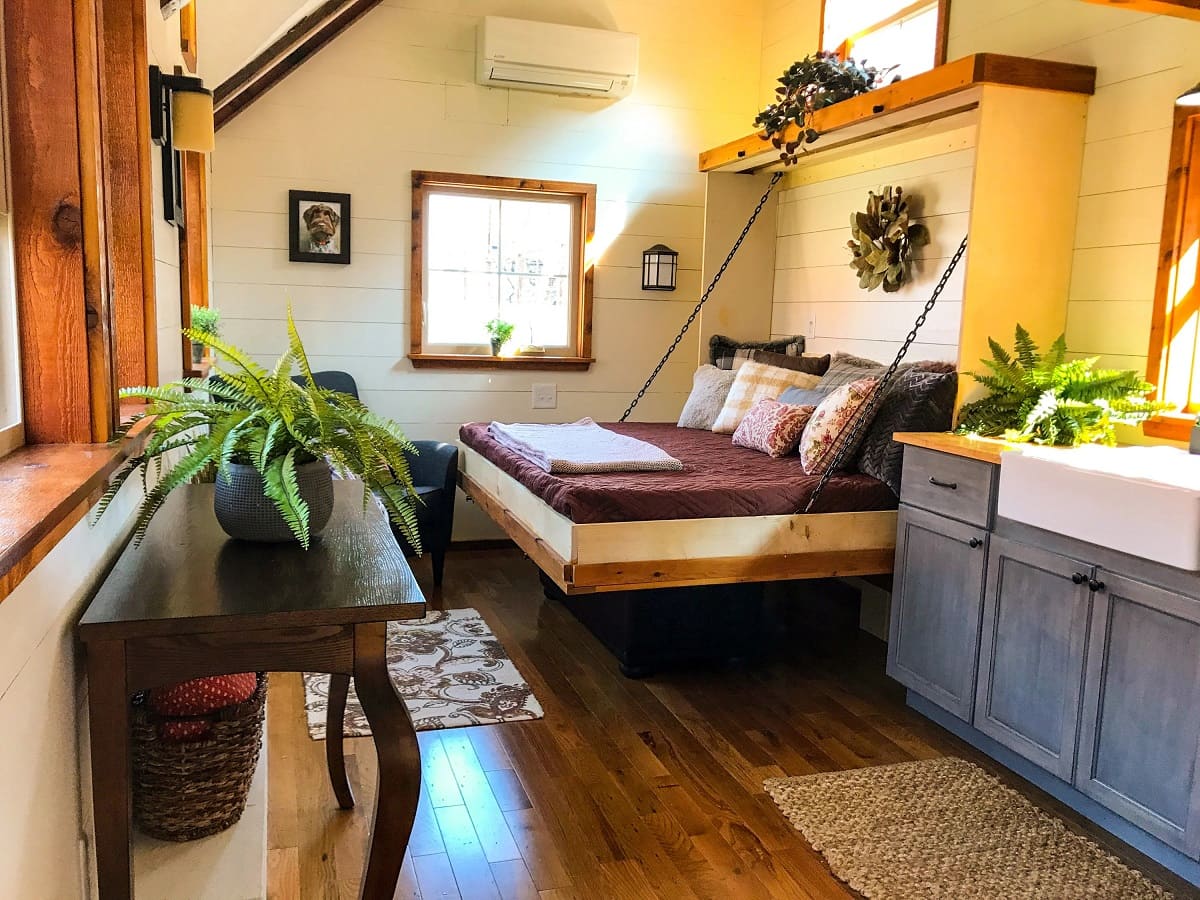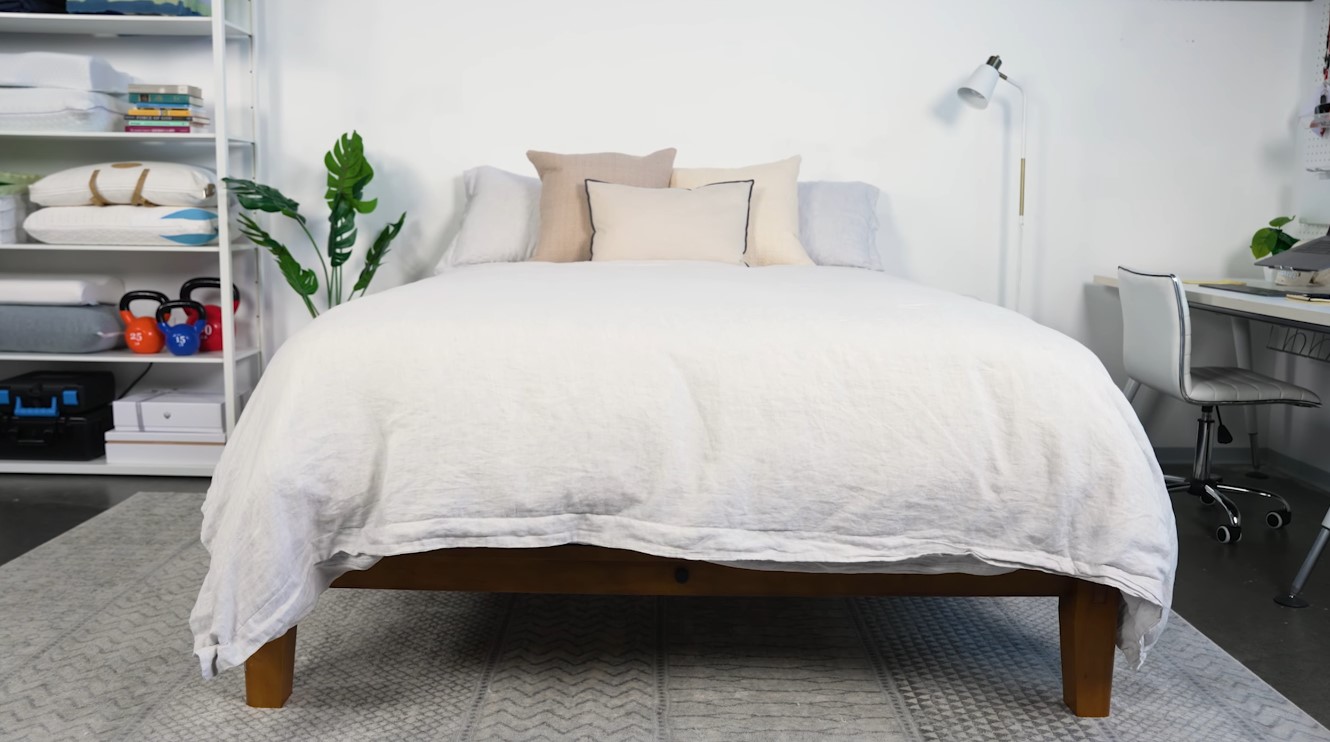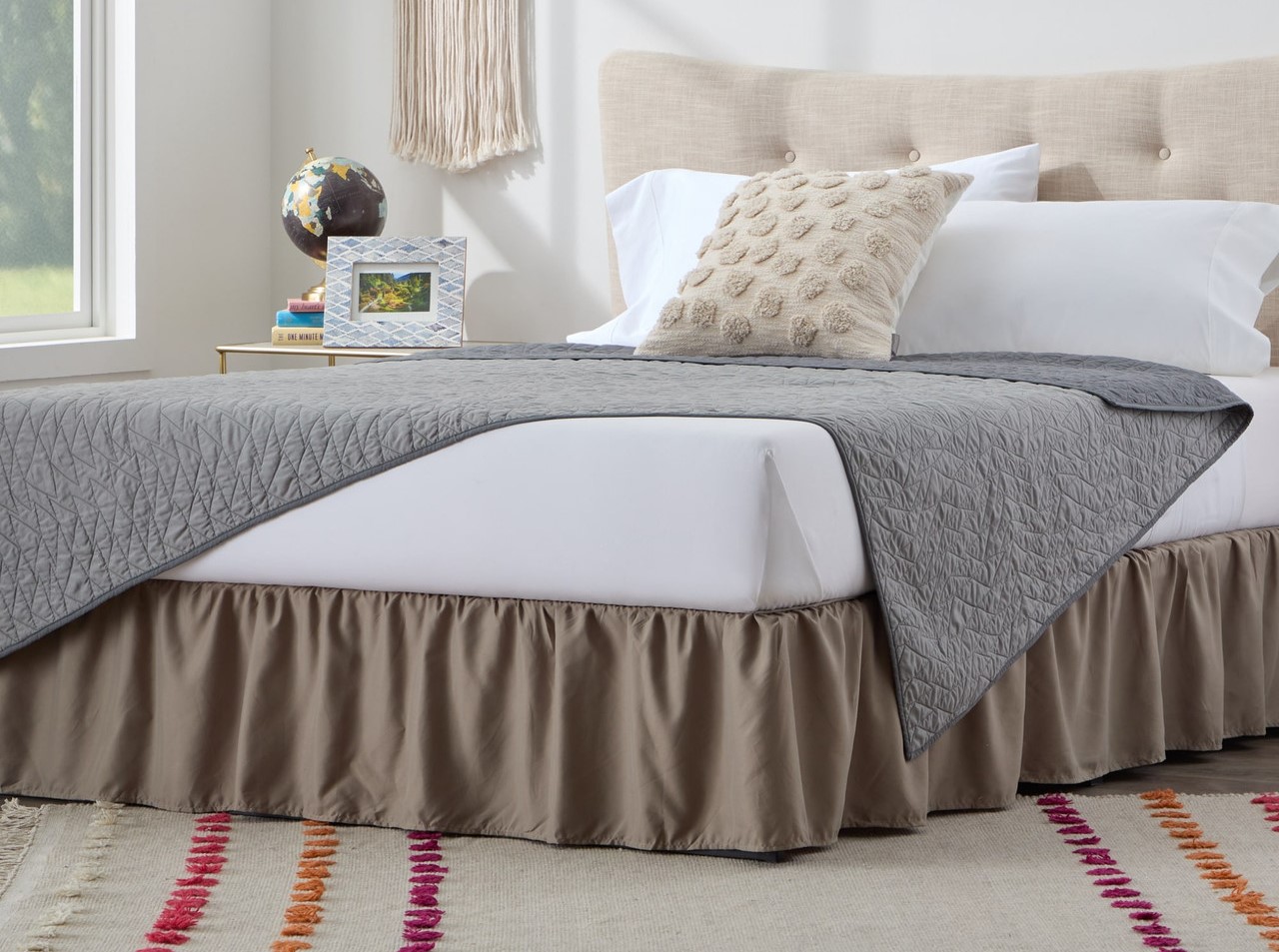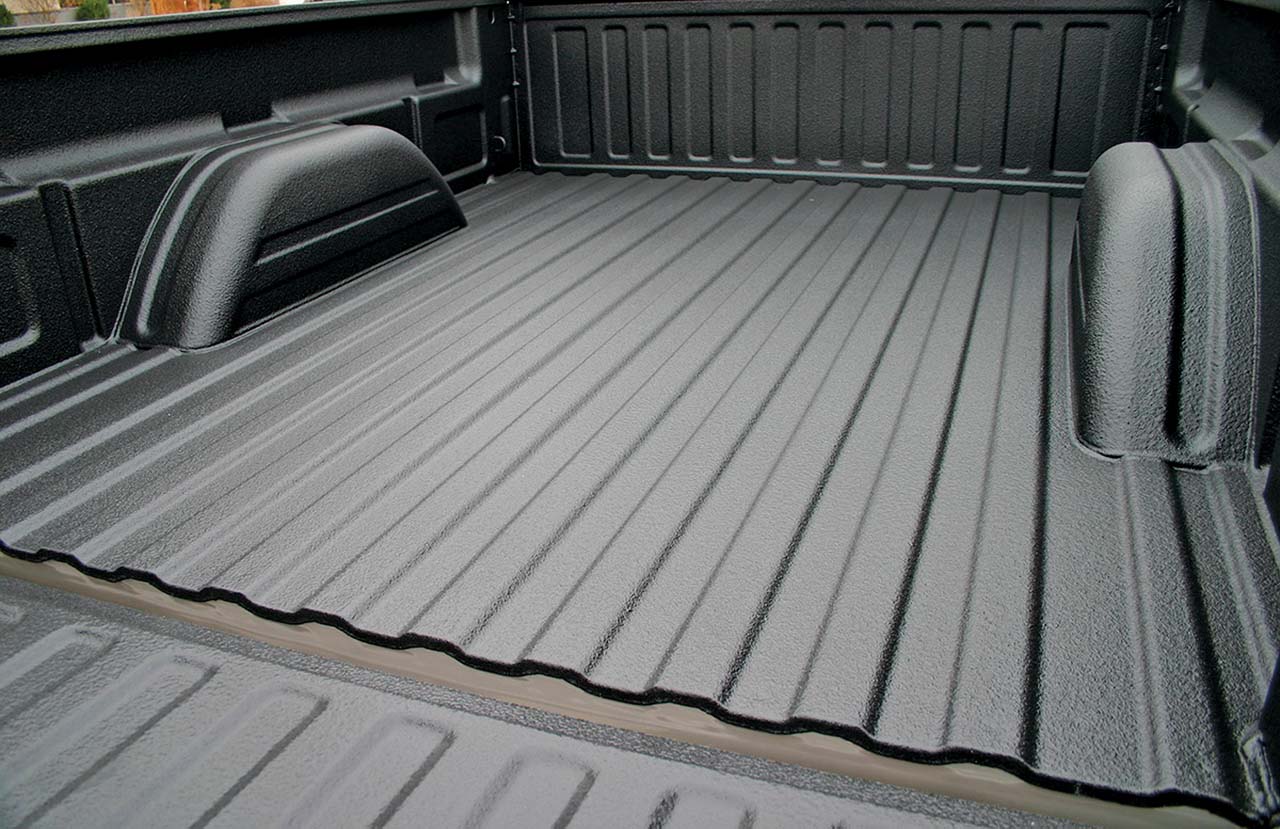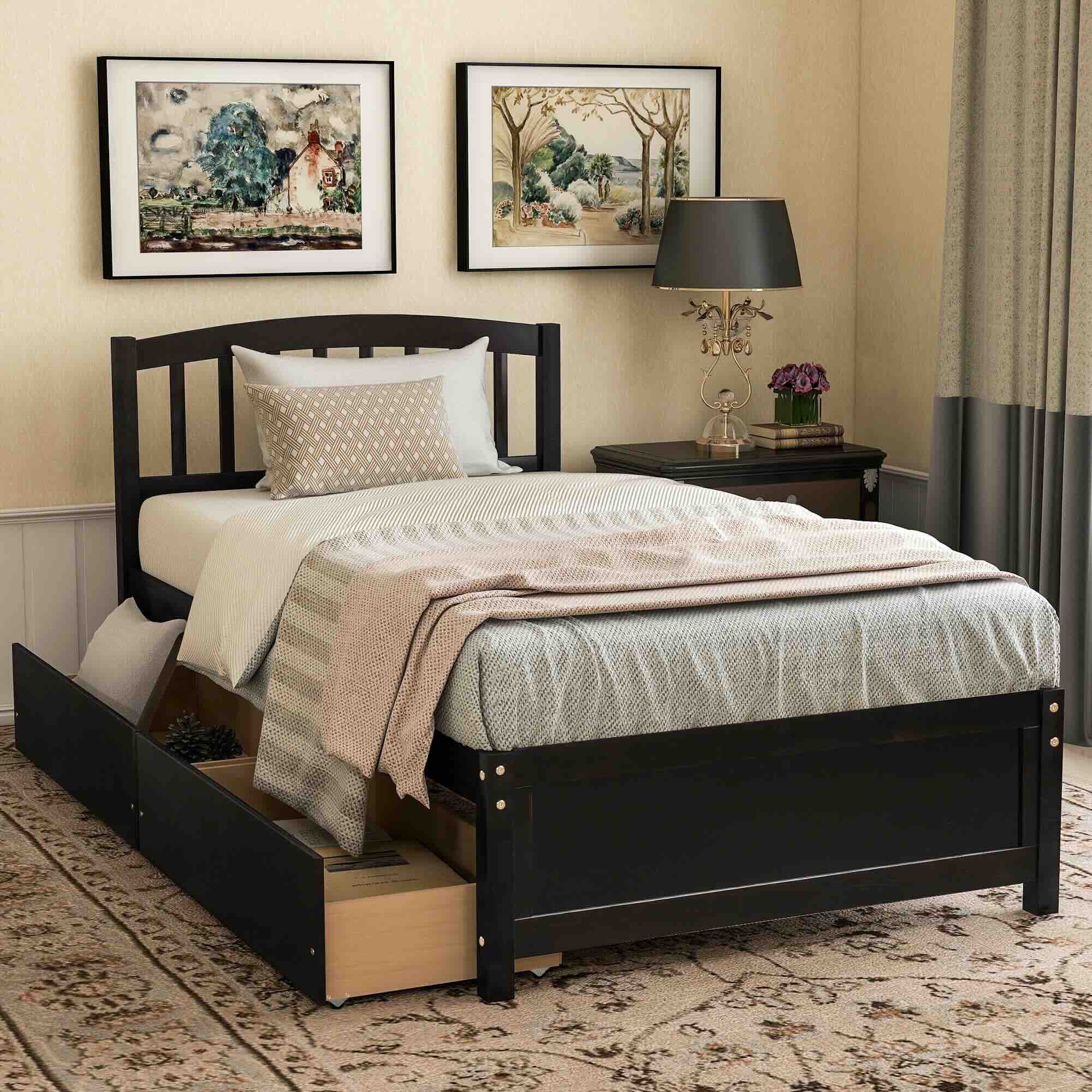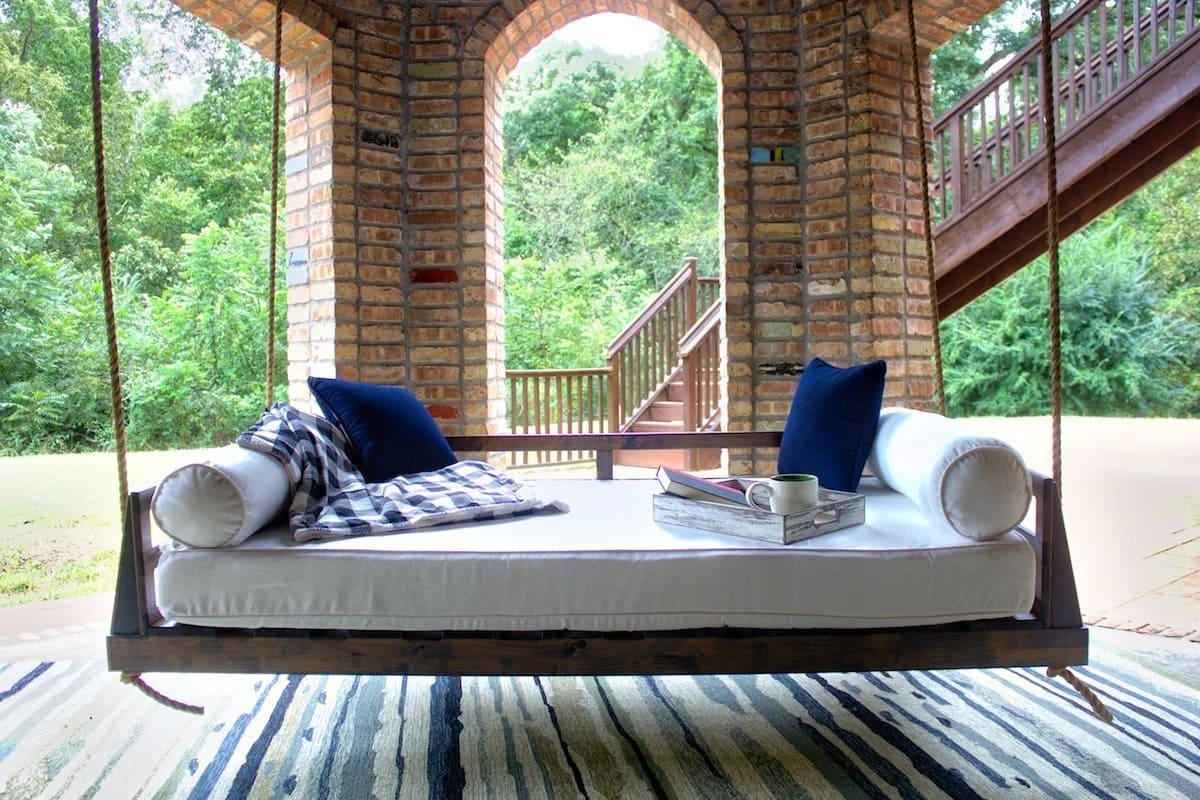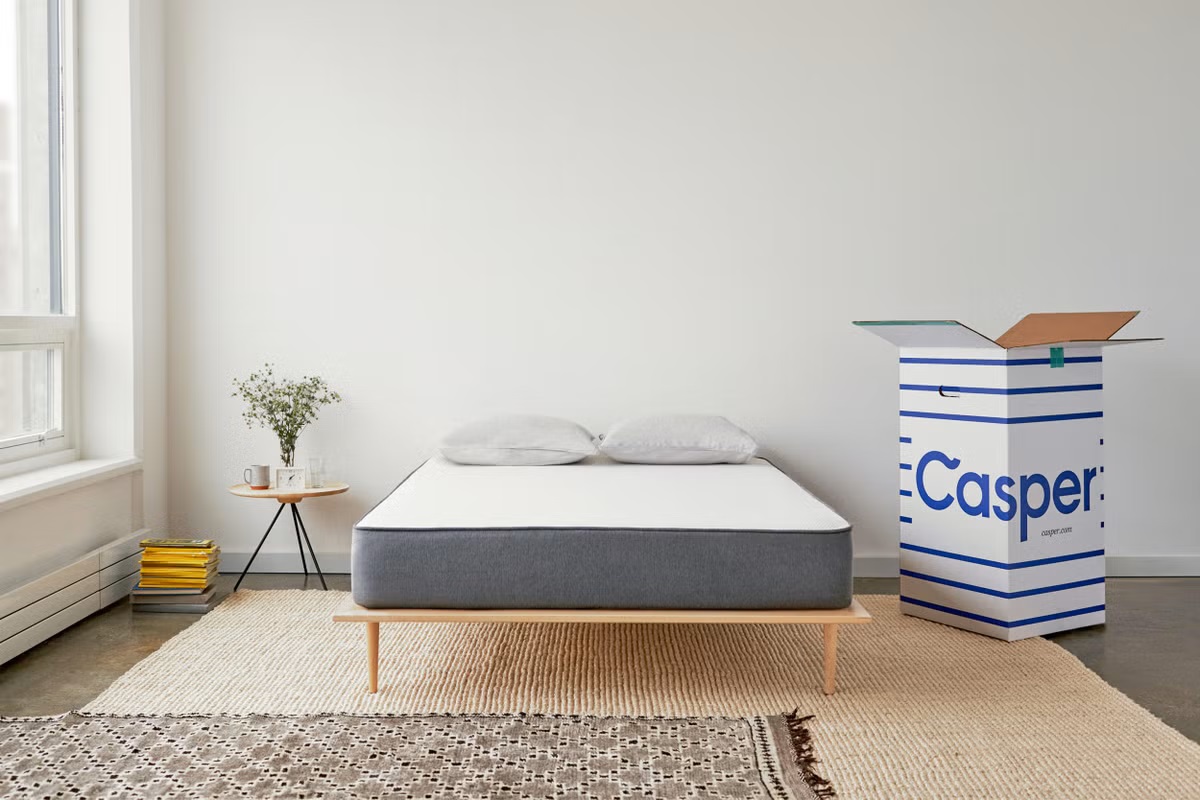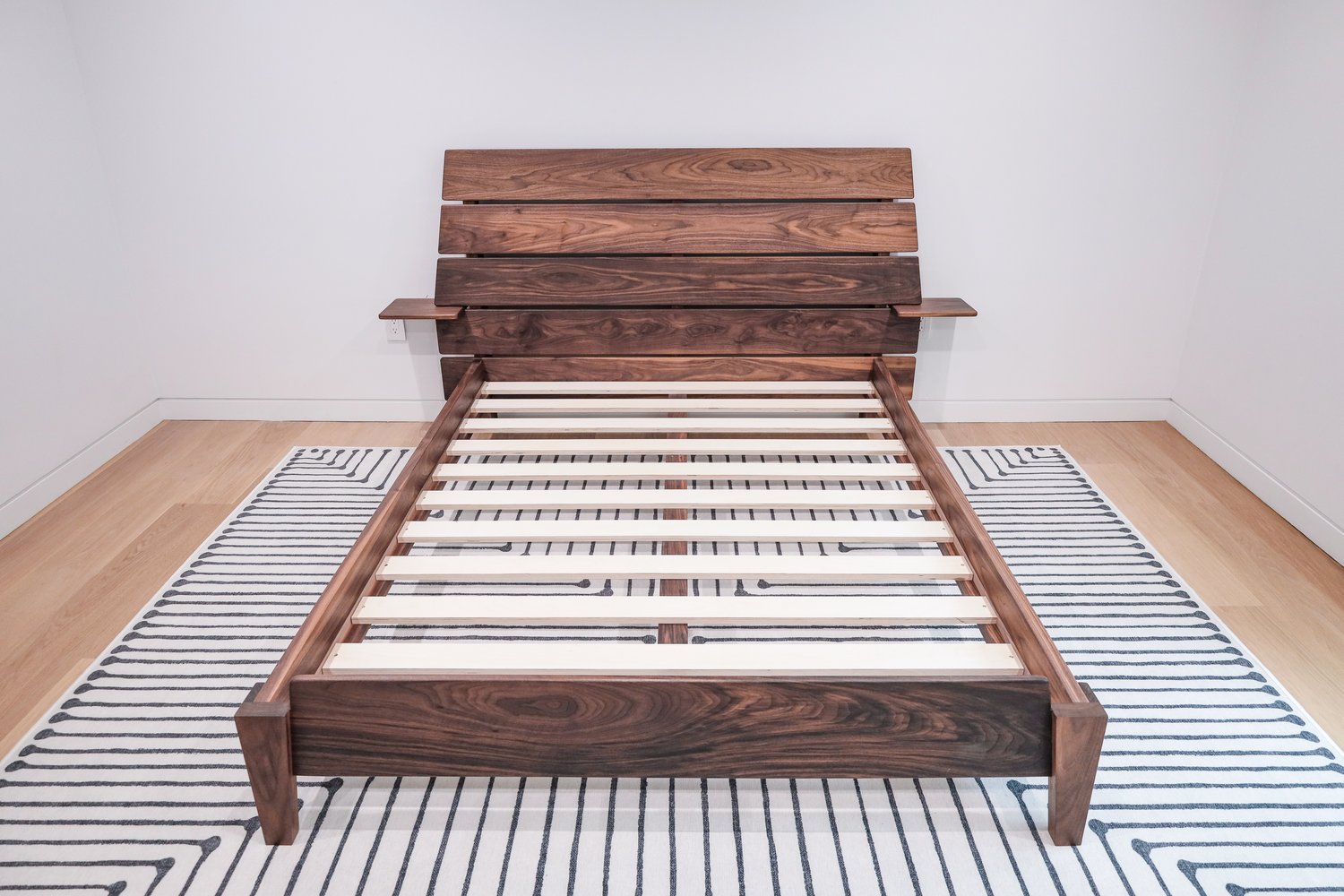Home>Furniture>Bedroom Furniture>What Is A Murphy Bed
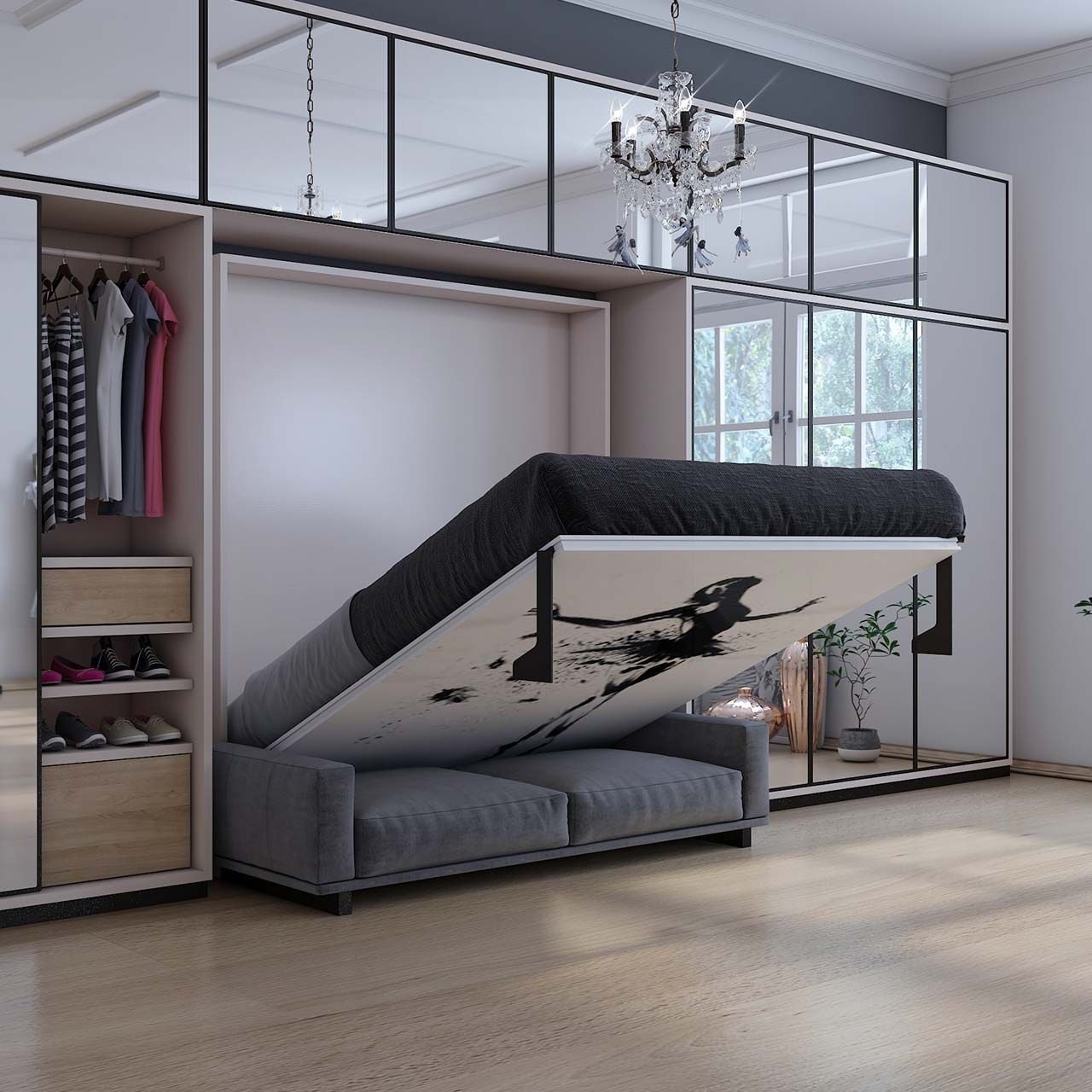

Bedroom Furniture
What Is A Murphy Bed
Modified: February 29, 2024
Discover the versatility of a Murphy bed for your bedroom. Transform your space with stylish and functional bedroom furniture.
(Many of the links in this article redirect to a specific reviewed product. Your purchase of these products through affiliate links helps to generate commission for Storables.com, at no extra cost. Learn more)
Introduction
When it comes to furnishing a bedroom, one of the most essential and often challenging pieces to consider is the bed. The bed serves as the centerpiece of the room and plays a crucial role in determining the overall comfort and style of the space. While traditional beds are a popular choice, more and more people are turning to innovative solutions to maximize the functionality and aesthetics of their bedrooms. One such solution is the Murphy bed.
The Murphy bed, also known as a wall bed or pull-down bed, has been a staple of small space living for over a century. Its unique design allows it to be conveniently tucked away against the wall, providing additional floor space when not in use. This makes Murphy beds especially popular in studio apartments, guest rooms, and multipurpose rooms where space optimization is key.
In this article, we will delve into the fascinating world of Murphy beds, exploring their history, mechanics, benefits, and more. Whether you are a homeowner looking to make the most of a small bedroom or a design enthusiast interested in learning about innovative furniture solutions, this article will serve as your comprehensive guide to Murphy beds.
Key Takeaways:
- Murphy beds offer a practical and stylish solution for optimizing space in small living environments, providing versatile sleeping accommodations without sacrificing functionality during the day.
- Before purchasing a Murphy bed, consider factors such as available space, mechanism type, and installation process to ensure a satisfying and long-lasting investment that maximizes the functionality of your bedroom.
Read more: What Is The Best Mattress For A Murphy Bed
History of Murphy Beds
The concept of the Murphy bed dates back to the late 19th century when it was invented by William Lawrence Murphy. At that time, space was a precious commodity in urban environments, and Murphy saw the need for a bed that could be easily stored away to free up floor space during the day.
In 1900, Murphy applied for a patent for his space-saving bed design, which featured a folding mechanism that allowed the bed to be hidden inside a closet or wall. The popularity of the Murphy bed quickly grew, and by 1915, Murphy Bed Company had become a well-established manufacturer of this innovative bed solution.
During the early 20th century, the Murphy bed gained recognition and acclaim for its practicality and space-saving benefits. It was particularly sought after in cities like New York, where apartments were often small and space was limited. The Murphy bed became a symbol of efficiency and functional design.
However, the popularity of Murphy beds eventually declined after World War II with the rise of suburban living and larger homes. Traditional beds became the norm, and the Murphy bed was relegated to being seen as a relic of the past.
Despite the decline, Murphy beds never completely disappeared from the market. In recent years, there has been a resurgence of interest in small space living and efficient design solutions, leading to a renewed appreciation for Murphy beds. Today, they are once again gaining popularity among homeowners who are looking to maximize their living spaces.
Modern Murphy beds have also evolved in terms of design and functionality. They now come in various styles, finishes, and configurations to suit different decor preferences and space requirements. Some Murphy beds even include additional features such as integrated shelving units or office desks, further optimizing the use of space within the bedroom.
The history of Murphy beds showcases the enduring appeal and practicality of this space-saving solution. From its humble beginnings as a simple bed hidden inside a closet, the Murphy bed has evolved into a versatile and stylish piece of furniture that continues to serve the needs of individuals and families in today’s compact living environments.
How Murphy Beds Work
One of the key features that sets Murphy beds apart is their folding mechanism, which allows them to be easily stored away when not in use. The mechanics of a Murphy bed are designed to provide a smooth and effortless transition between a fully extended bed position and a fully folded position against the wall.
The main components of a Murphy bed include a sturdy frame, a mattress, and a spring-loaded mechanism. The frame is typically made of metal or wood and is attached to the wall or floor for stability.
When the bed is in its folded position, it is concealed behind a decorative front panel, creating a seamless appearance. When it’s time to use the bed, the front panel is unlocked, and the bed is pulled down using a handle or lever. The spring-loaded mechanism helps to counterbalance the weight, making it easy to lower and raise the bed.
As the bed is opened, the legs and mattress unfold from the folded position until the bed is fully extended and ready for use. Most Murphy beds have a locking mechanism to keep the bed securely in place when it’s being used, ensuring safety and stability during sleep.
When it’s time to store the bed away, it can be easily lifted back up to the folded position. The spring-loaded mechanism helps to assist with the lifting, so it requires minimal effort. Once the bed is fully folded, the front panel is closed, and the bed seamlessly blends into the wall, reclaiming valuable floor space.
It’s important to note that Murphy beds are designed to work with a specific thickness and weight of mattress. This ensures that the bed mechanism operates correctly and safely. The size options for Murphy beds can vary to accommodate different mattress sizes, from twin to queen and even king.
In recent years, advancements in technology and design have led to the development of more innovative Murphy bed mechanisms. Some Murphy beds now feature hydraulic lift systems or electric motors, making it even easier to transition between bed and wall configurations with the push of a button.
Overall, the mechanics of a Murphy bed offer a practical and efficient solution for utilizing space in the bedroom. Whether it’s in a small apartment, a guest room, or a home office, a Murphy bed provides a seamless transition between sleeping and living areas, all while maximizing floor space and maintaining a stylish appearance.
Benefits of Murphy Beds
Murphy beds offer a range of benefits that make them a popular choice for those looking to optimize their living spaces. Here are some of the key advantages of owning a Murphy bed:
- Space Optimization: One of the primary benefits of Murphy beds is their ability to save valuable floor space. By folding up against the wall when not in use, Murphy beds free up room for other activities and furniture, making them ideal for small apartments, studio spaces, or multipurpose rooms.
- Guest Accommodation: Murphy beds are an excellent solution for accommodating overnight guests. Instead of dedicating an entire room to a guest bedroom, a Murphy bed can be installed in a home office or living room, allowing the space to serve dual purposes without permanently sacrificing functionality.
- Improved Room Functionality: With a Murphy bed, a room can transform from a bedroom to a home office, workout space, or play area in a matter of seconds. This versatility allows homeowners to make the most of their space and adapt it to their changing needs.
- Design Flexibility: Murphy beds come in a wide range of styles and finishes, allowing homeowners to choose a design that complements their existing decor. Some models even have customizable options, such as built-in shelving units or desks, further enhancing the functionality and aesthetic appeal of the bed.
- Comfortable Sleeping Experience: Despite their space-saving nature, Murphy beds are designed to provide a comfortable and supportive sleeping surface. They can accommodate standard mattresses of various thicknesses, ensuring a good night’s sleep for users.
- Ease of Use: Murphy beds are engineered with user-friendliness in mind. The folding mechanism and spring-loaded systems make it easy to transition the bed between its folded and extended positions, allowing for effortless setup and takedown.
- Clean and Clutter-Free Appearance: When a Murphy bed is folded up and concealed behind a front panel, it creates a clean and streamlined look in the room. This helps to maintain a clutter-free and organized environment, enhancing the overall aesthetic of the space.
Whether you are looking to maximize the functionality of a small space or add a versatile sleeping solution for guests, a Murphy bed offers numerous benefits that make it a practical and stylish choice. With their space-saving design and customizable options, Murphy beds provide the perfect blend of comfort, convenience, and aesthetic appeal for any living situation.
Common Uses of Murphy Beds
Murphy beds offer a versatile and practical solution for a variety of living situations. Here are some common uses of Murphy beds:
- Studio Apartments: Studio apartments often have limited space, making it challenging to separate living and sleeping areas. Murphy beds are an ideal solution as they can be tucked away during the day, creating more open space for entertaining or working, and then easily pulled down for a comfortable night’s sleep.
- Multipurpose Rooms: Many homes have rooms that serve multiple functions, such as a home office that doubles as a guest bedroom. Installing a Murphy bed in such a room allows it to transform from an office into a bedroom when needed, making efficient use of the space without sacrificing functionality.
- Guest Rooms: Murphy beds are a perfect addition to guest rooms. Instead of dedicating an entire room to occasional guests, a Murphy bed allows the space to be used as a home office, hobby room, or play area most of the time while providing a comfortable sleeping solution for visitors.
- Vacation Homes: In vacation homes or cabins where space is limited, Murphy beds offer a practical sleeping solution without compromising the functionality of the living areas. When the beds are not in use, the extra floor space can be utilized for socializing or other recreational activities.
- Children’s Rooms: Murphy beds are also a great option for children’s rooms. They provide extra floor space for playtime during the day, and at night, they can be easily pulled down, ensuring a cozy and comfortable sleeping environment for kids.
- Home Offices: Many people have home offices that occasionally need to be converted into a guest room. By incorporating a Murphy bed into the office design, the space can easily transform from a workspace into a bedroom, allowing visitors to have a comfortable place to sleep without disturbing the office setup.
- Gym or Workout Rooms: For fitness enthusiasts who have dedicated workout rooms, a Murphy bed can be a smart addition. It allows the room to serve as a private exercise space during the day and a comfortable sleeping area when needed, creating a perfectly balanced dual-purpose room.
Overall, the versatility and space-saving nature of Murphy beds make them suitable for a wide range of living situations. They offer a practical solution for maximizing space, allowing rooms to easily adapt to different needs throughout the day while providing a comfortable and convenient sleeping experience at night.
When considering a Murphy bed, make sure to measure the space where you plan to install it to ensure it will fit properly when folded up and when in use. This will help you avoid any installation or usage issues.
Read more: How To Build A Murphy Bed
Factors to Consider Before Purchasing a Murphy Bed
Before investing in a Murphy bed, there are several factors to consider to ensure you choose the right one for your needs. Here are some important considerations:
- Available Space: Measure the dimensions of the room where you plan to install the Murphy bed. Consider both the open and folded dimensions to ensure that the bed fits comfortably without obstructing other furniture or doorways.
- Mattress Size: Determine the desired mattress size for the Murphy bed. Consider factors such as the number of people who will be using the bed, personal sleeping preferences, and the available space.
- Mechanism Type: Research different types of folding mechanisms available for Murphy beds. Options include spring-loaded, hydraulic lift systems, or even electric motor-powered mechanisms. Each has its own set of advantages and considerations, such as ease of use, weight capacity, and cost.
- Installation: Consider whether you have the necessary skills and tools to install the Murphy bed yourself, or if you need professional assistance. Some Murphy beds may require drilling into the wall or floor, so ensure you are comfortable with the installation process.
- Quality and Durability: Look for Murphy beds made from high-quality materials, ensuring longevity and durability. Check customer reviews and ratings for different brands to get an idea of their reputation for quality craftsmanship.
- Additional Features: Consider any additional features you might want with your Murphy bed, such as built-in storage cabinets, shelving units, or a fold-out desk. These features can enhance the functionality and versatility of the bed, but keep in mind that they may come at an additional cost.
- Budget: Determine your budget for the Murphy bed, including any additional features or customization options. Consider not only the upfront cost but also the long-term value and quality of the bed.
- Warranty and Customer Support: Check the warranty and customer support offered by the manufacturer or retailer. A reliable warranty and responsive customer support can provide peace of mind and assistance if any issues arise with the bed.
By carefully considering these factors, you can make an informed decision and choose a Murphy bed that meets your specific requirements and preferences. Remember to prioritize the functionality, quality, and overall fit of the bed within your space to ensure a satisfying and long-lasting investment.
Installation Process of Murphy Beds
Installing a Murphy bed may seem intimidating, but with proper preparation and the right tools, it can be a manageable DIY project. Here is a general overview of the installation process:
- Prepare the Space: Clear the area where the Murphy bed will be installed. Remove any furniture, artwork, or decorations from the wall and floor. Make sure the wall is clean and free from any obstructions.
- Measure and Mark: Use a measuring tape to determine the correct height and width for the bed. Mark the position on the wall where the bed will be mounted. Consider the clearances needed in both the open and closed positions.
- Attach the Frame: Securely attach the frame of the Murphy bed to the wall according to the manufacturer’s instructions. Use a level to ensure the frame is installed straight and plumb. If required, attach the lower frame to the floor for added stability.
- Install the Springs or Lift Mechanism: Depending on the type of Murphy bed you have, you will need to install the springs or lift mechanism. Follow the manufacturer’s instructions carefully, as the installation process may vary.
- Attach the Bed Platform: Attach the bed platform to the frame, ensuring it aligns properly. Secure it tightly to the frame using the provided hardware or fasteners.
- Test the Mechanism: Once the bed platform is installed, test the mechanism by lifting and lowering the bed a few times to ensure it operates smoothly and safely.
- Install the Front Panel: Attach the front panel to the bed frame, concealing the folded bed when it is in the closed position. Ensure it aligns properly and securely fasten it using the provided hardware.
- Make any Necessary Adjustments: Check the bed for proper alignment and make any necessary adjustments. Ensure that the bed opens and closes smoothly and that it latches securely in the open and closed positions.
- Optional: Customize the Bed: If desired, you can customize the Murphy bed with additional features such as shelves, cabinets, or a fold-out desk. Install these components according to the manufacturer’s instructions.
- Enjoy your Murphy Bed: Once the installation is complete, your Murphy bed is ready to be used. Dress it with bedding, pillows, and any decorative touches to create a cozy and inviting sleeping space.
It’s important to note that the specific steps and requirements for installing a Murphy bed may vary depending on the manufacturer and model. Always refer to the detailed installation instructions provided by the manufacturer, as they will provide the most accurate guidance for your specific bed.
If you’re unsure about the installation process or would prefer professional assistance, hiring a skilled contractor or handyman experienced in Murphy bed installations can ensure a smooth and reliable installation.
Maintenance and Care of Murphy Beds
To keep your Murphy bed in excellent condition and ensure its longevity, regular maintenance and care are essential. Here are some key maintenance tips to follow:
- Regular Cleaning: Dust and clean the bed frame, front panel, and bed platform regularly. Use a soft, damp cloth or a mild cleaning solution recommended by the manufacturer. Avoid using harsh chemicals or abrasive materials that can damage the surface.
- Mattress Care: Rotate and flip the mattress as recommended by the mattress manufacturer to ensure even wear. Use a mattress protector to guard against spills and stains. Clean the mattress according to the manufacturer’s instructions.
- Mechanism Lubrication: Periodically lubricate the bed mechanism, hinges, and moving parts to ensure smooth operation. Use a lubricant recommended by the manufacturer and follow the instructions provided.
- Check for Loose Bolts and Screws: Regularly inspect the bed frame, hinges, and fasteners for any loose bolts or screws. Tighten them as necessary to maintain stability and safety.
- Ensure Proper Weight Distribution: Avoid placing heavy objects on the Murphy bed when it is in the closed position. Ensure that the weight is evenly distributed on the bed platform when it is in the open position to prevent strain on the mechanism.
- Avoid Slamming the Bed: Be gentle when opening and closing the Murphy bed to prevent unnecessary wear and strain on the hardware. Avoid slamming the bed to avoid damage and ensure the longevity of the mechanism.
- Keep the Area Clear: Avoid placing furniture or objects near the Murphy bed that may obstruct its movement when opening or closing. Keep the area around the bed clear to prevent any accidents or damage.
- Follow Manufacturer’s Instructions: Always refer to the manufacturer’s specific care and maintenance guidelines for your Murphy bed. They may have special instructions or recommendations based on the design and materials used in your particular bed.
Regular maintenance and care of your Murphy bed will ensure its functionality, safety, and appearance for years to come. By following these simple steps, you can enjoy a comfortable and reliable sleep space while maximizing the benefits of your Murphy bed.
Alternative Bed Solutions
While Murphy beds are a popular choice for optimizing space and functionality in bedrooms, there are also alternative bed solutions worth considering. These options provide unique features and benefits that may better suit your specific needs. Here are a few alternative bed solutions to explore:
- Sofa Beds: Sofa beds, also known as sleeper sofas, are versatile pieces of furniture that serve as both seating and sleeping solutions. During the day, they function as comfortable sofas, and at night, they can be transformed into beds. Sofa beds are particularly useful in living rooms or multipurpose spaces where extra sleeping accommodations are required.
- Futons: Futons are a practical and space-saving option that originated in Japan. They consist of a padded mattress that can be easily folded or rolled up during the day to create seating or additional floor space. Futons are suitable for smaller bedrooms or apartments where flexibility and simplicity are key.
- Bunk Beds: Bunk beds are an excellent choice for maximizing sleeping capacity, making them ideal for children’s shared bedrooms or guest rooms. They feature a design that includes two or more beds stacked on top of each other, saving valuable floor space while accommodating multiple sleepers.
- Trundle Beds: Trundle beds are a clever solution for maximizing sleeping space without sacrificing floor space during the day. They consist of a main bed frame with a secondary bed on wheels that can be rolled out from underneath. Trundle beds are a popular choice for children’s bedrooms or guest rooms.
- Loft Beds: Loft beds involve raising the sleeping area to a higher level, allowing for a usable space underneath. This area can be utilized for a desk, storage, or even another bed. Loft beds are particularly beneficial for small bedrooms or rooms with high ceilings, as they make efficient use of vertical space.
- Daybeds: Daybeds are another versatile option that serve as both seating and sleeping solutions. They resemble a sofa during the day and can be used as a bed at night. Daybeds are great for guest rooms, home offices, or even as a cozy seating area in a living room.
Each of these alternative bed solutions offers unique features and benefits, providing flexibility, space optimization, and comfort. When choosing an alternative bed solution, consider factors such as available space, the number of sleepers, desired functionality, and personal preferences.
It’s important to test and assess the comfort and practicality of different bed solutions before making a decision. Try visiting showrooms or furniture stores that offer these alternatives to get a firsthand experience of their features and quality.
By exploring these alternative bed solutions, you can find the perfect sleeping arrangement that meets your specific needs while maximizing space and functionality within your bedroom.
Read more: How To Install A Murphy Bed
Conclusion
In conclusion, Murphy beds offer a practical and innovative solution for optimizing space in bedrooms. With their folding mechanism and ability to be discreetly hidden against the wall when not in use, Murphy beds provide a versatile alternative to traditional beds, especially in small living spaces.
The history of Murphy beds showcases their enduring appeal and usefulness, dating back to their invention by William Lawrence Murphy in the late 19th century. While their popularity waned for a while, Murphy beds have made a remarkable comeback in recent years as people seek functional and space-saving furniture options.
Understanding how Murphy beds work and their benefits is paramount when considering them as a bed solution. Murphy beds offer benefits such as space optimization, versatility, and improved room functionality. They can be used in various settings, including studio apartments, guest rooms, home offices, and multipurpose rooms, providing comfortable sleeping accommodations for guests without sacrificing usable space during the day.
Before purchasing a Murphy bed, it’s important to consider factors such as available space, mattress size, mechanism type, installation process, and budget. Proper installation, maintenance, and care are also crucial to ensure the longevity and functionality of the bed.
While Murphy beds are a popular choice, there are also alternative bed solutions worth exploring, such as sofa beds, futons, bunk beds, trundle beds, loft beds, and daybeds. Each of these alternatives offers unique features and benefits that may better suit specific needs and preferences.
In the end, whether you choose a Murphy bed or another alternative bed solution, the goal is to maximize the functionality, comfort, and visual appeal of your bedroom. By considering your space requirements, personal preferences, and the specific needs of your household, you can select the bed solution that best fits your lifestyle and enhances your living space.
Investing in a well-designed and thoughtfully chosen bed solution will not only create a cozy and inviting environment for sleep but also contribute to the overall functionality and aesthetic of your bedroom. So, embrace the possibilities that Murphy beds and alternative bed solutions offer, and transform your bedroom into a sanctuary that reflects your style and maximizes your living space.
Frequently Asked Questions about What Is A Murphy Bed
Was this page helpful?
At Storables.com, we guarantee accurate and reliable information. Our content, validated by Expert Board Contributors, is crafted following stringent Editorial Policies. We're committed to providing you with well-researched, expert-backed insights for all your informational needs.
